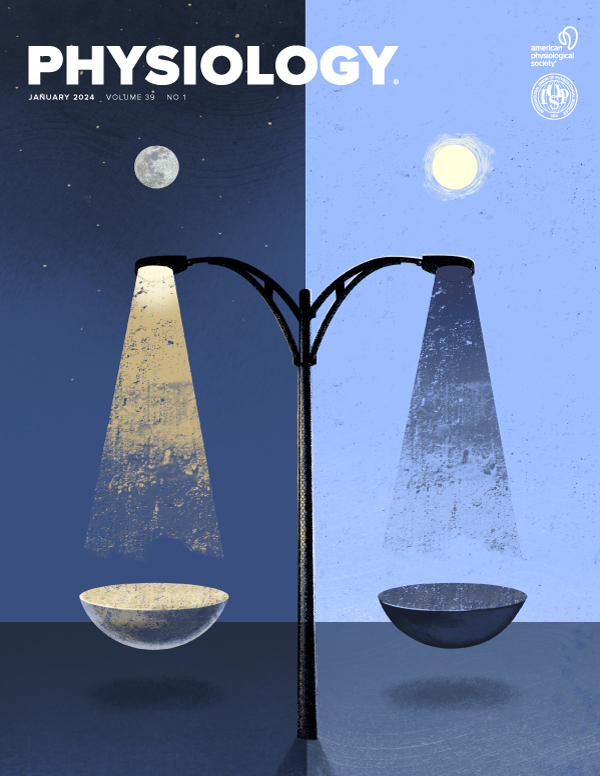Arterial and Intracranial Hypotension During and Following Exercise
IF 10.3
2区 医学
Q1 PHYSIOLOGY
引用次数: 0
Abstract
Exercise induced arterial hypertension and post-exercise arterial hypotension (PEH) are well-described phenomena with direct impact on cerebral blood flow. Cerebral perfusion pressure is given by the difference between mean arterial pressure at brain-level (MAPbrain) and intracranial pressure (ICP), however, little is known about effects of moderate aerobic exercise on ICP. We hypothesize that moderate exercise does not increase ICP thereby facilitating the augmented cerebral blood flow and that a post-exercise decrease in ICP is a contributing mechanism to maintained cerebral blood flow during PEH.Non-invasive (N=14) and invasive (N=3) ICP recordings and cardiovascular parameters were measured upright and supine before, during, and after 30 minutes of seated moderate aerobic bicycle exercise. Exercise elevated MAPbrain from 68±4 to 82±7 mmHg (mean±SEM, P<0.05) without elevating ICP, thus increasing CPP (72±3 to 87±6 mmHg, P<0.05). Compared to before exercise, we found significant PEH with a decrease in MAPbrain of 5±3% (5 mmHg; P<0.05), predominantly driven by a 26±5% (P<0.0001) decrease in total peripheral resistance (TPR). Because post-exercise ICP decreased concomitantly by 58±20% (P<0.0001) CPP remained unchanged. Recovery of ICP towards baseline was similarly correlated to TPR-recovery (R2=0.92, P<0.001), all variables returned to baseline within one hour.Here, we show for the first time ICP during and following aerobic exercise and consequences for cerebral perfusion. Periodic PEH is cardio-vascular protective and has long-term benefits for hypertensive patients, here we suggest that post-exercise decreases in ICP could similarly be cerebo-protective and in part explain the long-term beneficial effects of exercise for cerebral health and cognition. This work was supported by NASA grant no 80NSSC19K0020 and the Novo Nordic Foundation grant no NNF15OC0019196 This is the full abstract presented at the American Physiology Summit 2023 meeting and is only available in HTML format. There are no additional versions or additional content available for this abstract. Physiology was not involved in the peer review process.运动中和运动后动脉和颅内低血压
运动引起的动脉性高血压和运动后动脉性低血压(PEH)是对脑血流量有直接影响的现象。脑灌注压是由脑水平平均动脉压(MAPbrain)和颅内压(ICP)之差给出的,然而,关于适度有氧运动对颅内压的影响知之甚少。我们假设适度运动不会增加ICP从而促进脑血流量的增加,运动后ICP的降低是PEH期间维持脑血流量的一种促进机制。非侵入性(N=14)和侵入性(N=3)的颅内压(ICP)记录和心血管参数分别在坐姿适度有氧自行车运动前、中、后30分钟进行测量。运动使MAPbrain从68±4 mmHg升高到82±7 mmHg(平均值±SEM, P<0.05),而ICP未升高,因此CPP升高(72±3至87±6 mmHg, P<0.05)。与运动前相比,我们发现显著的PEH, MAPbrain下降了5±3% (5 mmHg;P<0.05),主要是由于总外周电阻(TPR)下降了26±5% (P<0.0001)。由于运动后颅内压同时下降了58±20% (P<0.0001), CPP保持不变。ICP向基线恢复与tpr恢复相似(R2=0.92, P<0.001),所有变量在1小时内恢复到基线。在这里,我们首次展示了有氧运动期间和之后的ICP及其对脑灌注的影响。周期性PEH对高血压患者具有心血管保护作用,并具有长期益处。我们认为,运动后ICP的降低可能同样具有大脑保护作用,这部分解释了运动对大脑健康和认知的长期有益影响。这项工作得到了NASA资助号80NSSC19K0020和Novo Nordic Foundation资助号NNF15OC0019196的支持。这是2023年美国生理学峰会上发表的全文摘要,仅以HTML格式提供。此摘要没有附加版本或附加内容。生理学没有参与同行评议过程。
本文章由计算机程序翻译,如有差异,请以英文原文为准。
求助全文
约1分钟内获得全文
求助全文
来源期刊

Physiology
医学-生理学
CiteScore
14.50
自引率
0.00%
发文量
37
期刊介绍:
Physiology journal features meticulously crafted review articles penned by esteemed leaders in their respective fields. These articles undergo rigorous peer review and showcase the forefront of cutting-edge advances across various domains of physiology. Our Editorial Board, comprised of distinguished leaders in the broad spectrum of physiology, convenes annually to deliberate and recommend pioneering topics for review articles, as well as select the most suitable scientists to author these articles. Join us in exploring the forefront of physiological research and innovation.
 求助内容:
求助内容: 应助结果提醒方式:
应助结果提醒方式:


